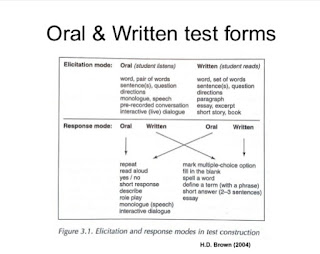Assignment from meeting 9-10
Summary BEYOND TESTS: ALTERNATIVES IN ASSESSMENT In the public eye, tests have acquired an aura of infallibility in our culture of mass producing everything, including the education of school children. Everyone wants a test for everything, especially if the test is cheap, quickly administered, and scored instantaneously. Tests are formal procedures, usually administered within strict time limitations, to sample the performance of a test-taker in a specified domain. Assessment includes all occasions from informal impromptu observations and comments up to and including tests. Early in the decade of the 1990s, in a culture of rebellion against the notion that all people and all skills could be measured by traditional tests, a novel concept emerged that began to be labeled "alternative" assessment. As teachers and students were becoming aware of the shortcomings of standardized tests, "an alternative to standardized testing and all the problems found with such test
